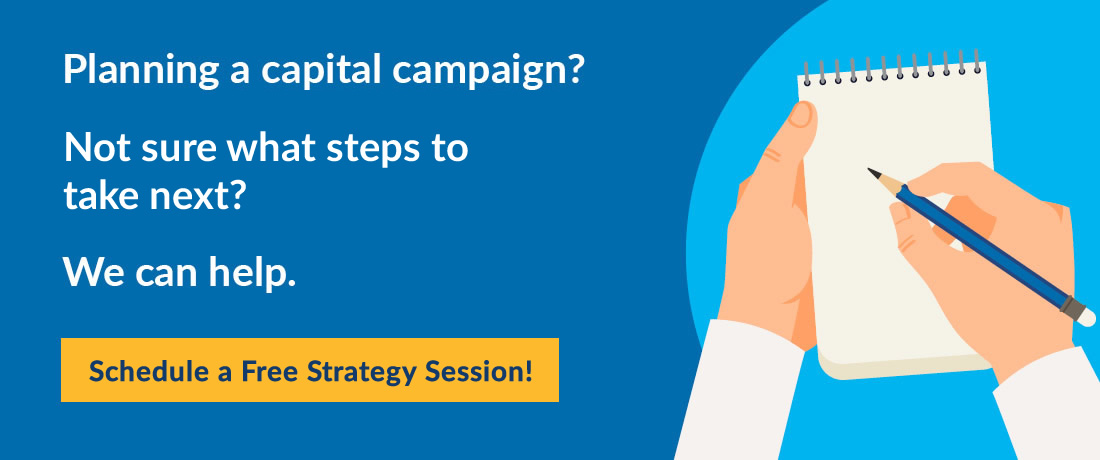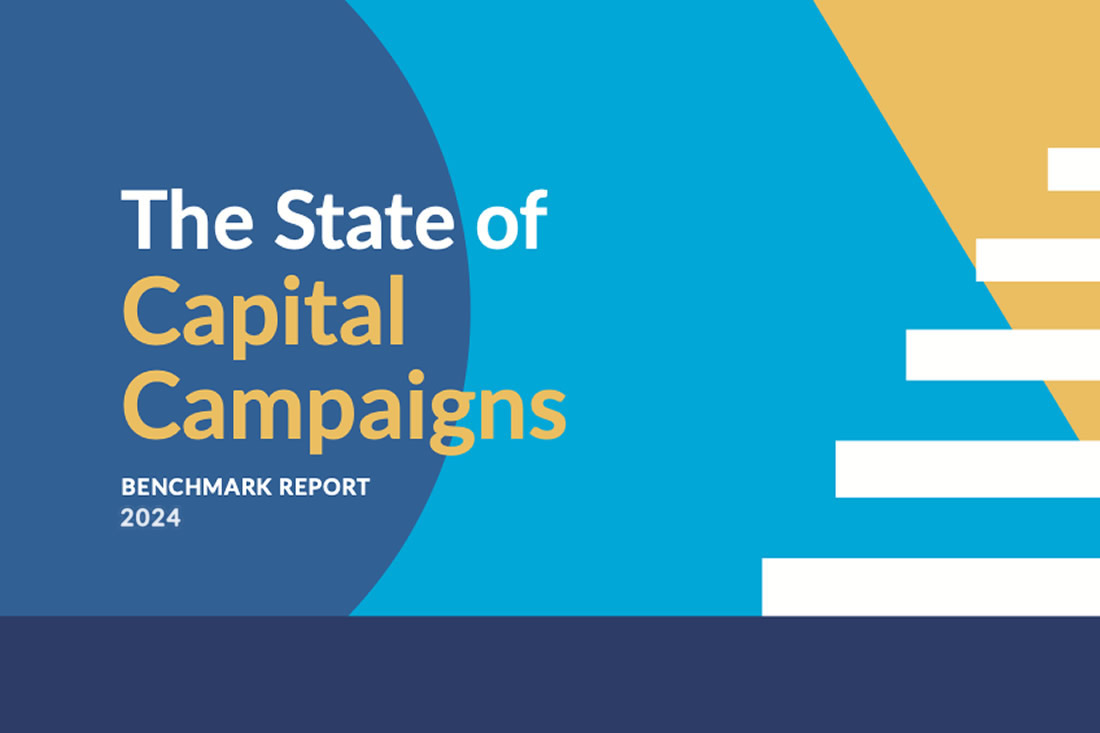Donor Stewardship: Successful Fundraising vs. Poor Fundraising

Capital campaigns live or die on the top 20-30 donors to the campaign. Those individuals typically give between 50 and 90 percent of the campaign goal. And it’s likely that the vast majority of those top-tier donors have been donors to your organization for many years.
In order to keep donors giving year after year, your organization should have excellent stewardship practices in place. Unfortunately, too many nonprofit organizations don’t practice good stewardship and tend to lose more donors than they keep.
What is Donor Stewardship?
Stewardship is what happens between an organization and a donor after a gift is given. It’s more than a simple thank you. It’s about how your donor feels after making a gift.
Good stewardship involves thanking donors in meaningful ways and can mean the difference between successful fundraising and poor fundraising.
Building a Successful Fundraising Program
To build a successful fundraising program, you’ve got to think more about the 3rd, 4th, and even the 5th gift from your donors — and ultimately a capital campaign gift and/or a planned gift — than you do about getting a donor to give their first gift.
When planning your stewardship practices, consider what the last or ultimate gift could be if your donors became long-term contributors. Those gifts are always much more significant than the first.
And yet, most development professionals are much more focused on the first gift rather than the last. That can be a costly mistake.
What if you knew, in advance, that a donor would give your organization many thousands of dollars over the course of her life and an even larger bequest? How would you treat her?
Adrian Sargeant talks about the lifetime value of a donor. It’s not the first gift that’s significant, but what they contribute over time. For a visual example of how significant donor retention is to your organization’s bottom line, check out this article on the Bloomerang Blog.
Involve Other People in Stewarding Your Donors
There are many ways to steward donors. Think about ways you might involve other people in the process. For example:
- The development director adds a handwritten note to the tax receipt
- The executive director calls all large and repeat donors
- The development director calls all first-time donors
- Board members write notes to donors
- Donors are thanked in a newsletter or on the website
- A program director invites donors to see the impact of their gifts in person
3 Keys to Donor Stewardship
Successful fundraising goes hand-in-hand with good stewardship. But what does that look like? Consider the following questions and suggestions as you develop your stewardship plan.
1. Who should steward donors?
Involve multiple people at your organization in the thank you process. From the person who opens the mail to the executive director and everyone in between. You might involve board members, program directors and even program participants.
2. How often should you thank your donors?
Thank donors immediately after a gift is made. Send them a written, formal confirmation of their gift. Then, a handwritten note or personal email and phone call should follow shortly thereafter (within a week, if possible).
3. By which methods should they be thanked?
Thank donors initially and primarily in the way they gave:
- Write an email to donors who give online
- Send a handwritten note to direct mail donors
- Thank donors who are solicited in person, with a phone call or other personal contact
Then, pay attention to how they respond. One donor might hang your handwritten note on the refrigerator while another puts it right into the recycling bin. Another donor might value hearing from you by phone, while another lets your call go to voicemail.
Let their actions help to guide your actions.
Trust is the Cornerstone of Donor Stewardship
When a donor makes a gift to an organization, that gift establishes a relationship built on trust. The donor trusts that the money will be well managed and used in a way that is in keeping with her intent.
To steward that relationship is to make sure that we don’t squander the trust between the donor and the organization. Stewarding donor relationships requires that we:
- Express gratitude for donor contributions
- Communicate well with donors about how their gifts will be used
- Share with them information about the work their gifts make possible
- Invite the donors to become more involved
- Periodically offer them opportunities to make additional gifts
Stewardship is NOT about manipulating donors
Stewarding a relationship isn’t about giving donors presents. Though, on occasion, you might have the opportunity to do that appropriately.
To steward a donor well is not to manipulate. It’s not to give them gifts they don’t want (see Richard Perry’s post on the Veritus Passionate Giving Blog: Giving the Wrong Gift to a Donor).
To be a good fundraiser is to care for, build and yes, steward, the relationships we have with our donors, respecting fully, the donor’s preferences and interests.
Scale Your Thank You to the Gift
The size of the gift should match the size, quantity, and significance of the thank you. You’re not going to put the name of a donor who gave $100 on the side of your building. Likewise, you wouldn’t send a form letter without a personal note or call to one of your biggest donors.
Segment your donors and tailor the stewardship approach to each group of donors. Consider these four key groups:
- Large donors (for example, $5K and up)
- New “first time” donors
- Monthly donors
- Loyal “repeat” donors
Each group deserves a different level of stewardship.
Let’s look at some ways you might express your thanks to donors.
So Many Ways to Say “Thank You!” to Donors
Be as creative as you can and make your thank you stand out. Remember to keep the thank you proportionate to the size of the gift.
1. Send Meaningful Thank-You’s
If possible, think of ways to thank donors that are meaningful in the context of your organization. That will help you stand out to your donors.
- Children’s choir? Send a song via video.
- Environmental organization? Send a packet of seeds.
- School or after school program? Send a poem or short story written by a student.
- Soup Kitchen? Send a packet of yeast or a tea bag (and tell a story to go along with it).
2. Create a video
Have staff or clients thank donors via video. The bigger the donation, the more personal the video should be. You can even have a few varieties of videos acknowledging different types of donors. Monthly donors should be thanked for helping all year long.
3. Deliver a small gift
Offer a small token of appreciation. Small gifts made by your clients, for example — a drawing, a picture, or a poem — can make a big impact.
Make Sure Donors FEEL Thanked
Don’t simply thank your donors — make sure they actually feel thanked. That’s what good stewardship is all about.
Stewardship is a critical component of successful fundraising. Put as much time and attention into stewarding your donors as you do in asking them for gifts. It can make the difference between successful fundraising and poor fundraising. So don’t skimp on your stewardship!




Lots of good suggestions there. Relating to stewardship and sending handwritten notes or cards, you might want to check out HappyDonors.net (part of Thankster.com) to make this process easier. It lets you automate the process by integrating it with your CRM / DRM or other software. Or we can help you with one-off projects and custom cards. You can go to bit.ly/postsamp to get a free sample.